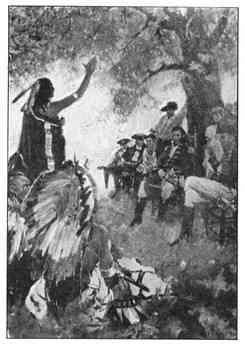Battle of Brownstown |
||
|---|---|---|
| Date | Wednesday, August 5, 1812 | |
| Weather | Warm and sunny, 84 degrees | |
| Location | Brownstown Township, Michigan | |
British Empire |
United States |
|
| Belligerents | Native Americans | The United States of America |
| Commanders | Tecumseh | Thomas Van Horne |
| Casualties |
Force: 25 Killed: 1 Wounded: 0 Captured: 0 |
Force: 200 Killed: 18 Wounded: 12 Captured: 70 |
|
The battle occurred near Brownstown, a Wyandot village south of Fort Detroiton Brownstown creek. Brownstown was also known as "Sindathon's Village". Carlson High School in Gibraltar, Michigan, is near the site of the battle. BackgroundEncouraged by the British, the Mingo, Wyandot, Miami, Delaware, Shawnee,Kickapoo, Sauk, Ottawa, Ojibwe, Potawatomi, Mohawk and Chickamaugajoined an alliance in 1783 against the Americans. The alliance was originally formed at the Sandusky villages of the Wyandot, but after those villages were destroyed, the council fire was moved to Brownstown. Walk In The Water and seven other Wyandot chiefs petitioned the U.S. on February 5, 1812, and obtained a 50-year possession of Brownstown and Monguagon; he lived at Brownstown and commanded the Wyandot warriors. On August 5, 1812, Major Thomas Van Horne and 200 American soldiers were en route south to the River Raisin, where they were to pick up cattle and other needed supplies and escort them back to Fort Detroit for the use ofBrigadier General William Hull. Hull was, at the time, in the Canadian village of Sandwich, now known as Windsor, Ontario, although he would abandon his position there and return to Detroit on August 8. [edit]BattleAs the Americans forded Brownstown creek, the 200 Americans were set upon by two dozen natives led by the Shawnee war chiefTecumseh and several others, including Walks In The Water. Faced with such opposition, Van Horne ordered a retreat, whereupon the untrained American militia scattered in a panic. Van Horne was able to save only half of his command; 18 men were killed, 12 were wounded, and 70 went missing. AftermathJosiah Snelling, known colloquially as the Prairie Chicken, was cited for gallantry for his actions during the Battle of Brownstown, and promoted to Major. Later, after Hull surrendered Fort Detroit to Tecumseh, Snelling's testimony was used at Hull's court-martial. One minor chief died in the battle. By an act of the United States Congress on June 1, 1813, the widows of those men killed in the battle were awarded half pay for five years. In at least one case, that of Jacob Pence, $953.43 was paid in October 1832 and $422.53 in April, 1839, for a total of $1,375.96. |
||
 The Battle of Brownstown was an early skirmish in the War of 1812. Although American forces outnumbered the British forces 8 to 1, they lost the battle and suffered substantial losses while the enemy was almost untouched.
The Battle of Brownstown was an early skirmish in the War of 1812. Although American forces outnumbered the British forces 8 to 1, they lost the battle and suffered substantial losses while the enemy was almost untouched.